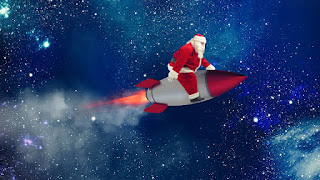Santa's Scientific Sleigh: A Theoretical Journey
In the spirit of Christmas magic, let's indulge in a thought experiment. Imagine a sleigh, powered not just by reindeer, but by the limits of physics, zipping across the world to bring joy to every child. Such an endeavor requires a feat of engineering and speed that boggles the mind. As the festive countdown begins, let's explore the incredible science that would underpin this hypothetical sleigh's voyage.
The Velocity Of Christmas Cheer
A team of bright minds at the prestigious Massachusetts Institute of Technology (MIT) pondered Santa's challenge. If Santa were to launch his gift-giving escapade from the North Pole, crossing all time zones, he'd have roughly 31 hours to work his magic—if we account for the time shifts. With around 92 million households eagerly awaiting his visit, Santa would need to make a dizzying 822.6 stops every single second. Imagine the sleigh darting across the skies at a jaw-dropping speed of approximately 4 million kilometers per hour!
Santa's Sleigh: A Feat of Festive Engineering
The sleigh's design would need to accommodate the substantial weight of gifts, assuming an average present weighs 0.9 kilograms. This would bring the total weight to an astronomical 320 thousand tons, a hefty load for any number of reindeer. However, the sheer velocity and resistance faced would lead to a catastrophic outcome akin to a spacecraft re-entering Earth's atmosphere—complete disintegration in mere thousandths of a second.
A Different Perspective on Santa's Speed
Another study by diligent physics students at the University of Leicester takes a different approach. Considering the 715 million Christian children worldwide, Santa would have a tighter 12-hour window to complete his delivery route. To achieve this, Santa's sleigh would need to reach velocities of 1.56×10^6 meters per second. That's a swift 0.5 percent of light speed.
Here at FreeAstroScience.com, we're enamored with the blend of festive folklore and scientific inquiry. While these figures present a whimsical look at a beloved legend, they also demonstrate the joy of applying scientific principles to even the most magical scenarios.
So, as you hang your stockings and decorate your tree, take a moment to marvel at the extraordinary physics that would be required for Santa's sleigh to streak across the night sky. It's a delightful reminder of the wonders of science and the endless possibilities it presents—even in the realm of holiday cheer.


Post a Comment